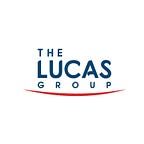COVID Pivot — PE spotlight
Oil & Gas
The US oil and gas industry, especially upstream shale production and recovery (drilling), has been in a tailspin since the global price war between Russia and Saudi Arabia came to a head in 2018. The price of oil dropped from a peak in Q3 2018 of around $70 per barrel to just under $60 by year-end 2019 — perilously close to the $50 breakeven point for many of the US producers who largely rely on shale and “fracking” technology. The drop in demand for gasoline, jet fuel, and even diesel as Americans locked down and stayed/worked at home at the outset of the pandemic exacerbated an already troubling situation: oil dropped to an incredulous $16 per barrel by the end of March 2020.
Public and private equity investors who flocked to the industry (private equity investment from 2009–2018 alone exceeded $800bn) on the promise of innovative US drilling technology and oil topping out at over $100 per barrel suddenly were faced with a slew of bankruptcies in an overly-invested, hyper-competitive sector with gloomy prospects as the fundamentals of economic activity shifted — perhaps permanently — due to COVID-19. A veteran COO of a $250mm Colorado-based upstream producer put it bluntly: “I don’t think this is a cycle; I think what’s happening here is structural. The oil and gas business has never really recovered from the downturn in 2015. A lot of capital’s been destroyed in the interim, hoping for a recovery. But this feels like 1986 to me… it’s not a cycle that runs over a year or 2 or 3. I think this could be 5 to 10 years of structural adjustment.”
The shift can be seen in the numbers. The amount of annual private equity capital invested and deals in Oil & Gas has dropped by 47% from 2017 to 2019 according to Pitchbook, and energy- focused fundraising is on pace to drop by almost 60% in 2020 from 2018 according to Preqin.
And while load factors for US airlines are up, they’re still down by over 45% from 2019 levels, and even though Americans are driving relatively more to summer destinations in 2020, they’re still driving almost 10% less in total than the same period in 2019. And the Saudis and Russians seem content with oil under $50/barrel — as long as it continues pressure on US shale production.
This leaves our private equity clients invested in or exposed to volatility in the oil and gas industry wondering how much of the COVID-induced behavioral and market shifts are likely to stick and where the price of oil and derivative products will end up near term and beyond. This question applies not only to those invested directly in the most vulnerable upstream producers but also in mid and downstream activities, “infrastructure,” and the entire O&G “ecosystem.” While it is true that refining, distribution, and infrastructure players are apt to be less adversely impacted by <$50/barrel than oil producers, opportunities in those sectors may already be played out. Justin Beardon, Preqin’s global infrastructure and natural resources market director, was recently quoted in an S&P Global Market Intelligence piece (6/29/2020) as saying: “Alternative asset managers whose oil and gas portfolio companies do not survive, meanwhile, might decide to pivot to an adjacent sector such as infrastructure, only to find that those spaces are already crowded.”
More broadly, PE firms need to look at promising deals and their portfolio companies to ascertain any hidden or lurking exposure. On a recent Pinpoint Diligence assessment of a middle-market professional services firm, our private equity client was alarmed by the impact we quickly discovered that almost 25% of their business (and 50% of their recent growth) was from oil and gas producing customers — some teetering on the edge of bankruptcy.
Predicting where oil and derivative product prices are going is a challenging task. Perhaps the “best” consensus estimates come from the US Energy Information Administration (EIA) and the Short Term Energy Outlook (STEO). A synopsis of their August 2020 forecasts follows:
The “good” news from those forecasts is the trend is stable and up. If, however, your portfolio or deal pipeline are dependent on oil exceeding $50/barrel, 2022 looks like the better bet.
